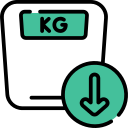Q. Are there specific foods or habits that trigger or worsen acid reflux?
Doctor Answer is medically reviewed by SecondMedic medical review team.
Acid reflux occurs when stomach acid flows back into the esophagus, causing that uncomfortable burning sensation. While the exact triggers can vary from person to person, there are several common foods and habits known to exacerbate this condition.
1. Spicy Foods: Spices can be a delightful addition to your meals, but they are also notorious for triggering acid reflux. They can irritate the esophagus and stomach lining, leading to heartburn and discomfort.
2. Fatty Foods: High-fat meals, like fried foods and rich sauces, can relax the lower esophageal sphincter (LES), allowing stomach acid to escape into the esophagus more easily.
3. Citrus Fruits: While packed with vitamin C, citrus fruits like oranges and grapefruits are acidic and can aggravate acid reflux symptoms in some individuals.
4. Tomatoes and Tomato Products: Tomatoes are naturally acidic, and foods like tomato sauce, ketchup, and even pizza can be triggers for acid reflux.
5. Caffeine and Carbonated Beverages: Coffee, tea, and carbonated drinks can relax the LES and increase stomach acid production, making them common culprits for heartburn.
6. Alcohol: Booze can weaken the LES and irritate the esophagus, potentially leading to acid reflux symptoms.
7. Mint and Peppermint: While they can be soothing for digestion, peppermint and minty products can relax the LES and worsen reflux.
8. Chocolate: Sadly, chocolate isn't the best friend of acid reflux sufferers. It contains both caffeine and cocoa, which can relax the LES and stimulate acid production.
9. Eating Large Meals: Overeating can put pressure on the stomach and cause acid to flow back into the esophagus. Smaller, more frequent meals are often recommended.
10. Late-Night Snacking: Going to bed shortly after eating can allow stomach acid to creep into the esophagus while lying down. Try to eat at least two to three hours before bedtime.
11. Smoking: Smoking weakens the LES and reduces saliva production, which normally helps neutralize stomach acid. Quitting smoking is a win-win for your overall health.
12. Tight Clothing: Wearing tight belts or waistbands can increase pressure on the abdomen and contribute to acid reflux.
13. Lying Down After Eating: Gravity plays a role in keeping stomach acid where it belongs. When you lie down right after eating, it's easier for acid to flow into the esophagus.
Now, it's important to note that triggers can vary from person to person. What causes discomfort for one person might not affect another. If you suspect certain foods or habits are triggering your acid reflux, it's wise to keep a food diary and note when symptoms occur. This can help you pinpoint your personal triggers and work with a healthcare professional to develop a personalized plan for managing your acid reflux effectively.
Related Questions
-
Cardiology Heart disease How painful is open heart surgery?
-
Are there any ongoing research or clinical trials related to Congenital Heart Disease that might offer new treatments or insights? | Secondmedic
-
How is Bradycardia diagnosed, and what diagnostic tests are commonly used? | Secondmedic
-
How are Atrial Septal Defects treated, and what are the available treatment options? | Secondmedic
-
Cardiology Heart disease What happens when an abdominal aortic a












